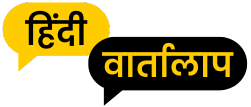Ragnarok or the Norse equivalent of Doomsday is a phenomenon few are unaware of. The term Ragnarok can be translated to “Twilight of the Gods”. A more literal translation of the two terms it is made of comes out to be “The Unproblematic and the Problematic”, the face-off between the Norse Gods and the Giants.
The Giants have been the debatable forces which signify evil in the Norse mythology while Gods led by Odin clearly signify forces of good. The mighty war involved giants like Fenrir, the wolf son of loki breaking free from its shackles, extreme unending winters an what not.
An Evil Lurking
The world facing calamities, the evils rising to challenge the good might sound like an event in the fables but it actually means so much more. If we relate the Ragnarok to the context of modern times, one would realise climate change, increasing crime rates and testing times are similar to the onset of Ragnarok during the times of the Norse Gods.
Loki leading the army of the undead signifies the grudges and sorrows of human deeds haunting them, the way Global warming is. Sutr paving the way for the Chaos giants can be related to the anarchy causing havoc in today’s times. The mighty Fenrir breaking free to challenge Odin, seeking revenge can be visualised with Mother Nature fighting back to restore itself against our cruel deeds.
The End is yet to be Decided
The ultimate end of Ragnarok led to total destruction from which new life sprouted. But one thing which it didn’t seize to signify was the balance between Good and Evil. The same needs to be understood by man today, or else it would not take time for the forces to reclaim the position of balance. That would not end well for humanity. There is a new beginning to every end for sure, but we need to choose between a comma and a full stop.
